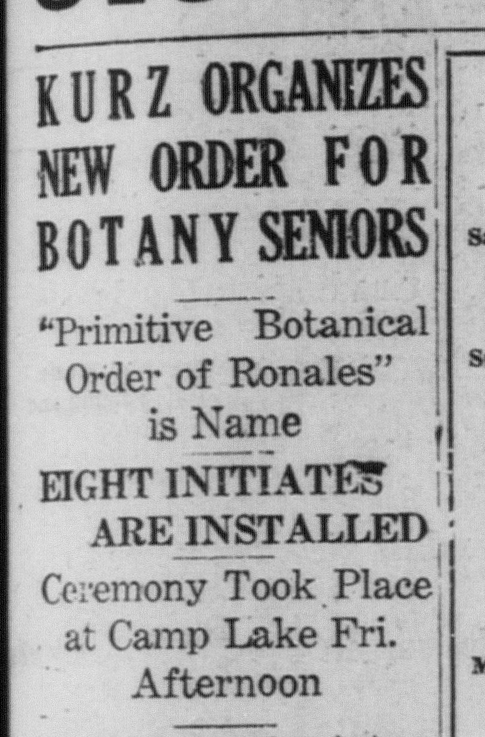
Botany was one of the first hard science majors offered at the Florida State College for Women. It was established in 1916 with Alban Stewart as the professor at the time. The classes were made up of only a few students, up to 10 a semester, due to a lack of interest in the subject.
In 1929, a club was established under the name: Primitive and Botanical Order of Ronales. Membership to this club was only available to botany majors. The club started off with only 8 members, the total of women involved in the major at that time. The Primitive and Botanical Order of Ronales was founded by Dr. Hurman Kurz who was known for his studies of traditional Native American ways of identifying and distinguishing flora and fauna.

Dr. Kurz organized a yearly field trip to the Apalachicola area. This field trip was exclusively for the senior members of the Primitive and Botanical Order of Ronales. On this trip Dr. Kurz would teach the members how to identify the flora and fauna using Native American traditions.
Under Dr. Kurz, the botany department was able to have a laboratory/greenhouse dedicated to botany. There, students were able to conduct experiments such as growing seedless tomatoes, research, and gardening. They were also able to examine fossils that were either found by students or donated to the department.


During World War 2, more job specific classes were added to the class registry, allowing for students to be more prepared to enter into the workforce after college. These classes were usually centered around jobs that were in high demand and relevant to the war effort. In 1942, more botany courses were added to the register due to the Pure Seed Law Enactment of 1939. This federal enactment required seeds to be correctly identified, pure in composition, and properly packaged. Since more classes were added, it allowed for the botany major to grow in size.

As of 2020, Botany is still a major offered in the biological sciences department. It is now referred to as “the field of Plant Sciences”. This major “broadly includes the study of photosynthetic organisms, especially plants and algae. It prepares students to make important contributions to the world in the areas of agriculture, food security, natural resource management, sustainability, policy, and many others.”
This article was written by Aya Saludo, a student worker in Heritage & University Archives.